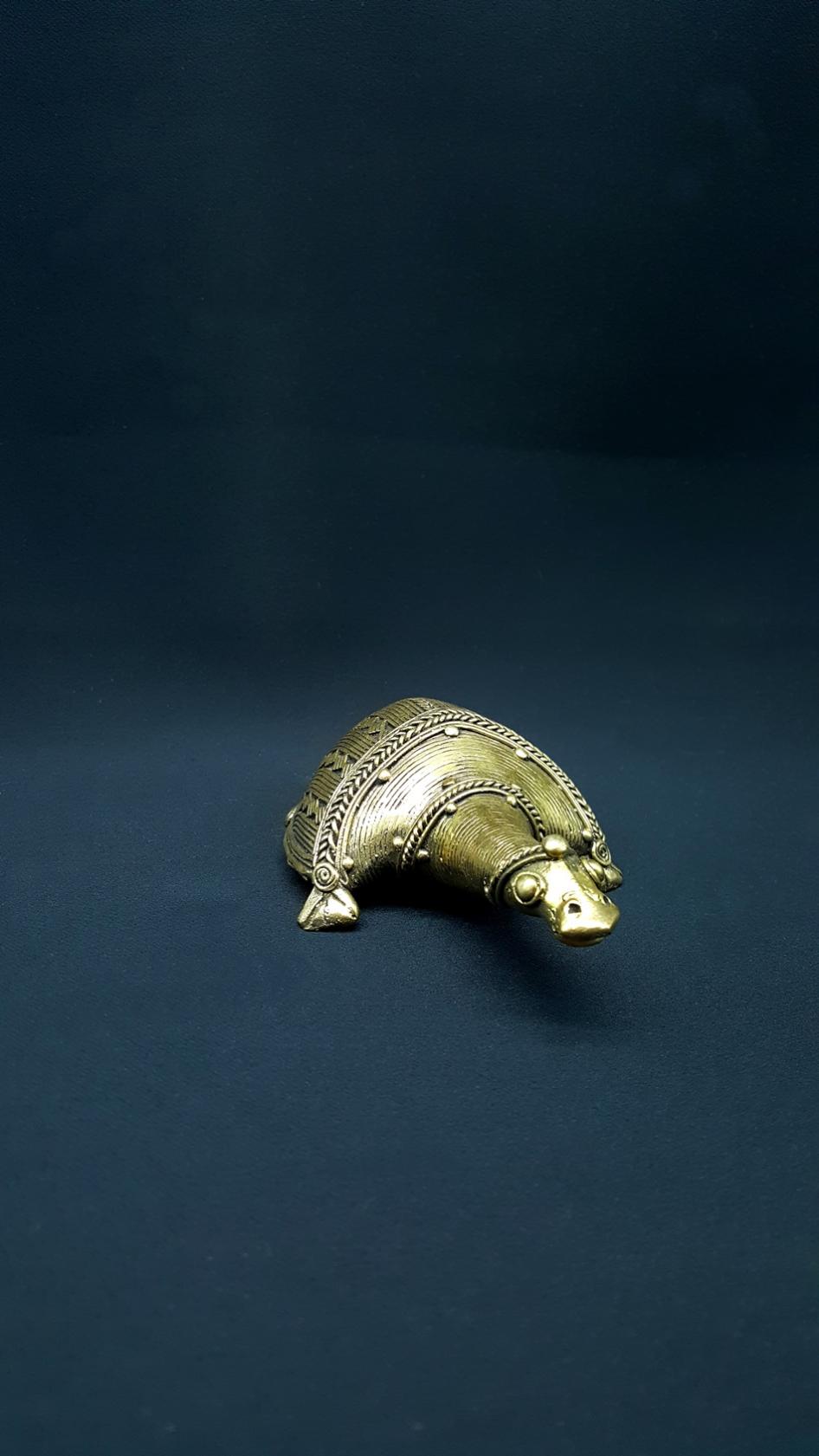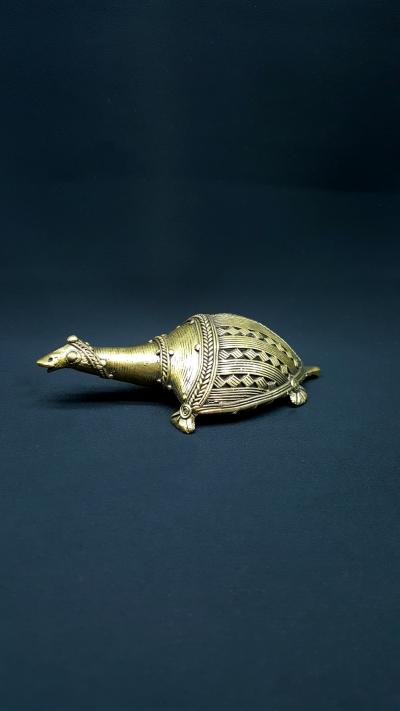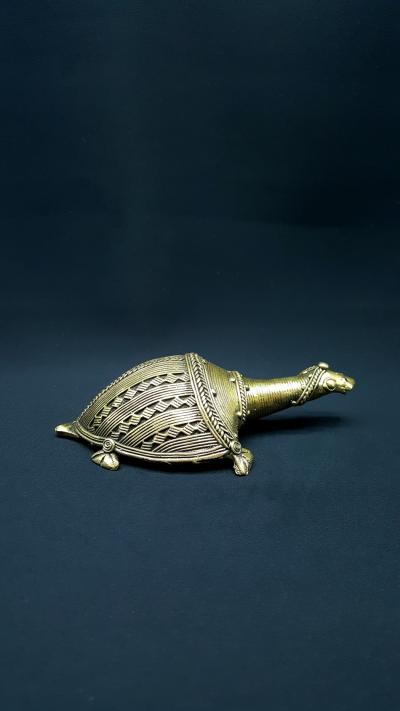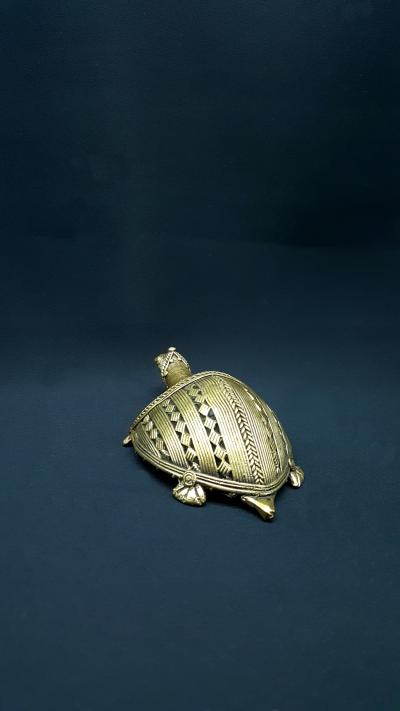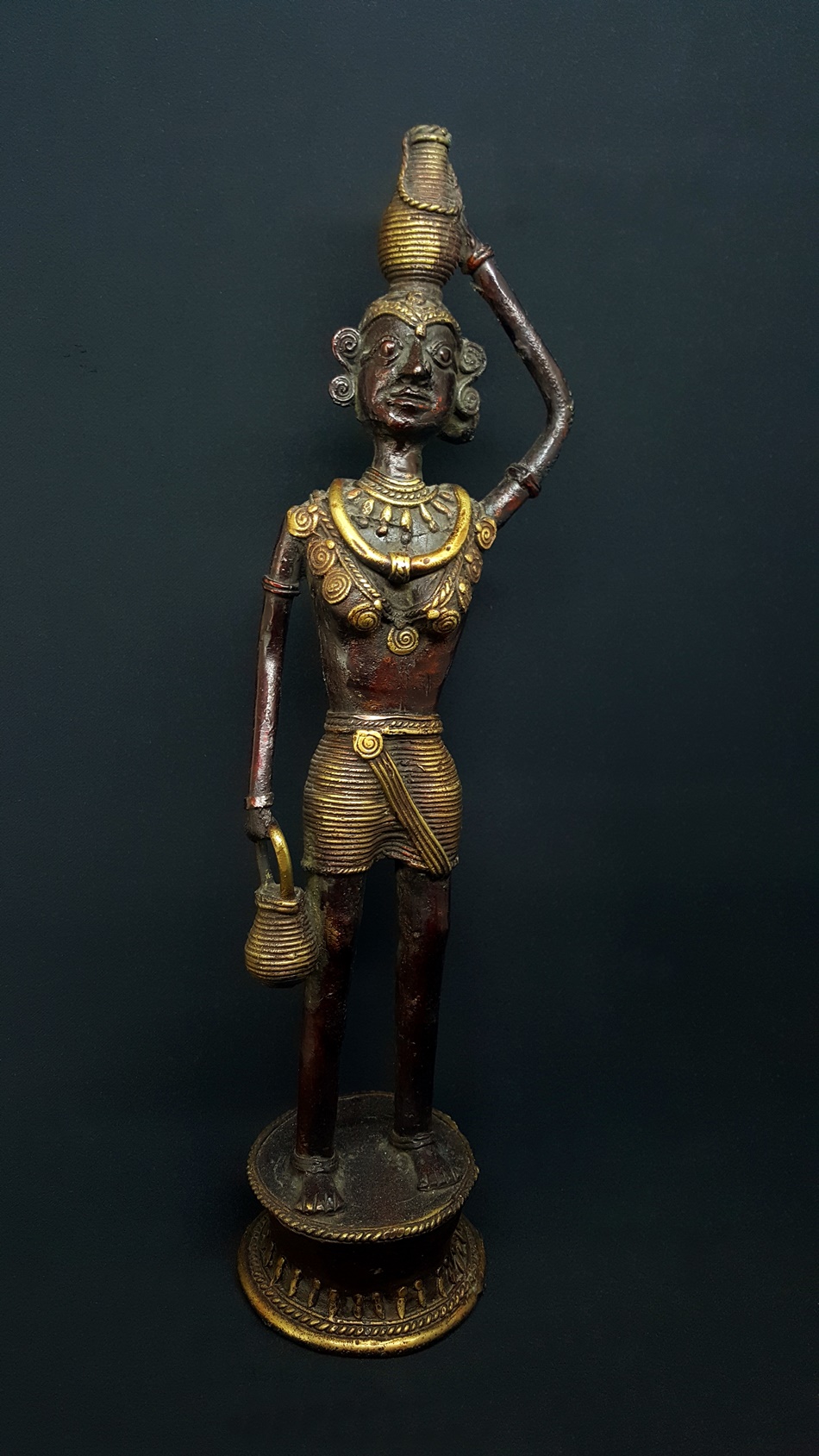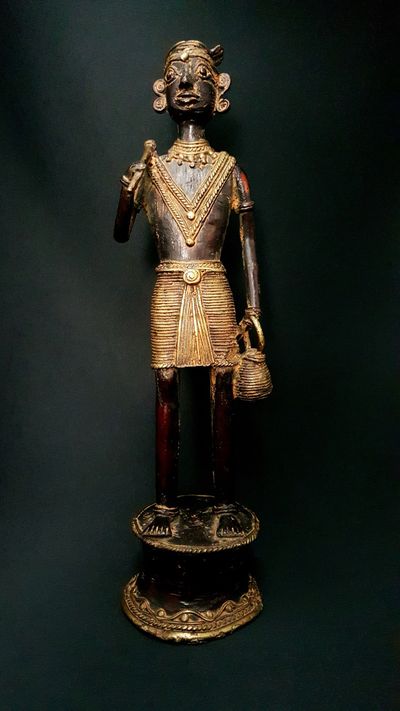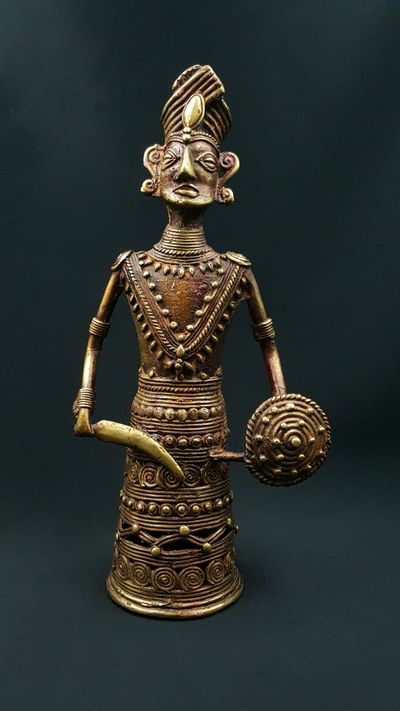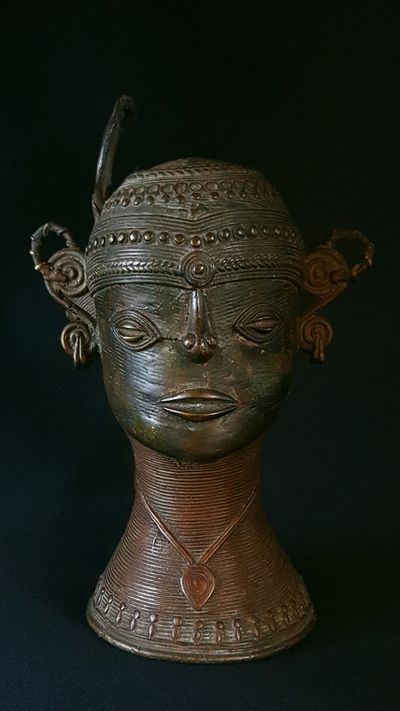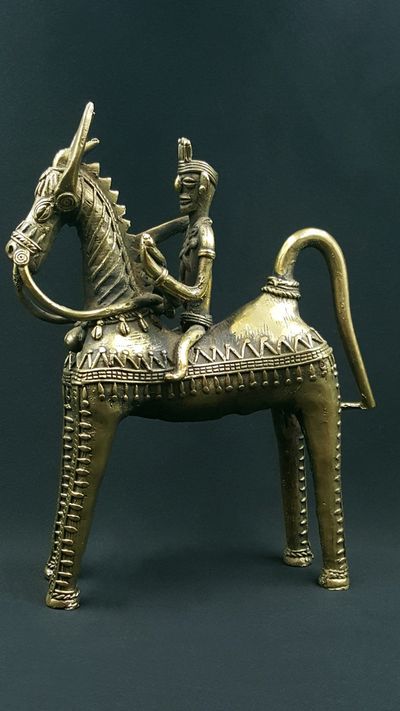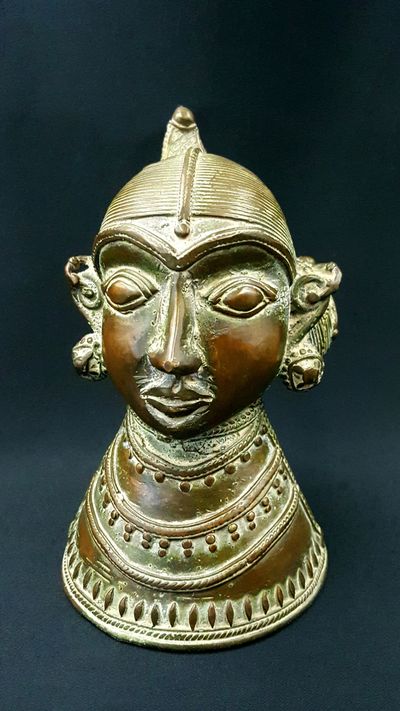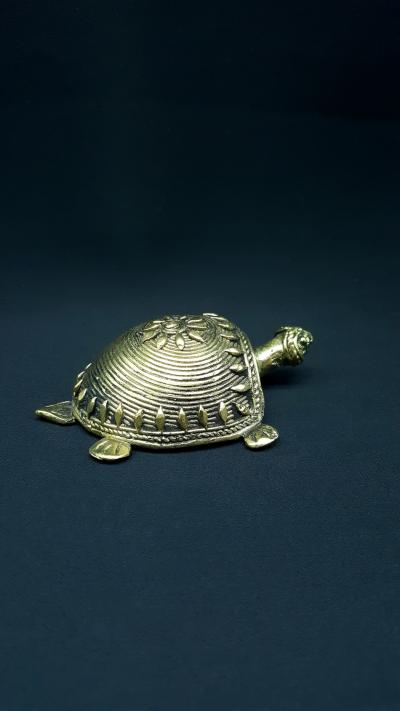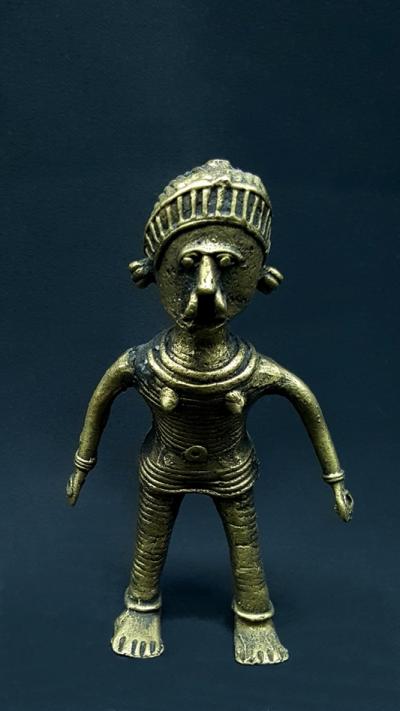Statue Bastar Tortue la magnifique
Le support du monde
€125.00
Statue Bastar tribale en laiton de l’Inde du Sud représentant une tortue : les animaux jouent un rôle primordial dans la vie tribale. En savoir plus...
Hauteur : 14.5 cm
Poids : 0,275 Kg
Art tribal
Cire perdue
Origine : Madhya Pradesh - Inde
Livraison gratuite UE, Norvège et Suisse
Description
Les Bastars
Le Bastar est un district de l’Inde du Sud dans l’État de Chattisgarh, il fût un royaume indépendant du 14° siècle jusqu’à son intégration à l’Inde en 1948.
La population tribale représente 70% de la population du district de Bastar: les principales tribus sont les Gonds – les Abhuj Maria et les Bhatras. La plupart ont gardé leur tradition (art culinaire, vestimentaire, fêtes…) et leur religion animiste.
Les tribus vivent encore principalement de l’agriculture et des ressources tirées de la forêt (chasse, plantes médicinales, bois…).
Certaines tribus se consacrent à l’art statuaire en laiton depuis plus de 4000 ans. Cet art, que l’on retrouve aussi dans les États du Madhya Pradesh, de l’Odisha, dans l’Ouest Bengale, du Bihar... est appelé Dokra.
L'art Dokra
Cet art traditionnel et artisanal n’a pas changé depuis des millénaires (+ de 4000 ans) et la technique utilisée est toujours celle de la cire perdue : un modèle grossier en argile est réalisé puis recouvert de cire par l’artiste qui va lui donner sa forme définitive avec ses détails. L’ensemble est à nouveau recouvert d’un mélange argileux puis chauffé dans un foyer ouvert où un alliage cuivreux sera coulé. Voir Blog.
Les objets produits par les artistes Dokra peuvent être de nature usuels : coupelle, bougeoir… des instruments de musiques (cuivres), ou bien artistiques tels que des bijoux, des animaux : chevaux, éléphants, tortues…, ou encore des statues d’hommes et femmes représentant des scènes de vies quotidiennes et des divinités hindous adoptées par les tribus : Ganesh, Lakshmi, …
Magnifique tortue au long cou lui donnant une grâce divine. La carapace est richement décorée de motifs géométriques souvent utilisés dans l’art Dokra. Sa tête est aussi ornée d’un diadème renforçant sa nature divine.
La tortue symbolise la longévité, l’endurance, la prudence.
Sa carapace, ses quatre pattes ancrées dans le sol figure la force, la puissance.
Dans l’hindhouisme, entre autres, la tortue est le support du monde : elle est associée aux eaux primordiales qui permirent la manifestation du monde. Elle peut aussi être l’incarnation de Vishnou, alors symbole de régénération, lorsqu’il émerge de l’eau portant sur sa carapace la terre.
Elle symbolise aussi l’absolu lorsque, tête rétractée, la tortue n’est plus que carapace, l’état primordial.
L’ensemble de ses qualités lui fait incarner la sagesse.
L’harmonie avec la nature tient une place primordiale chez les tribus animistes en Inde qui ne peuvent concevoir la nature comme leur appartenant. Ils forment un tout avec elle et cette sculpture marque bien ce lien fort.
